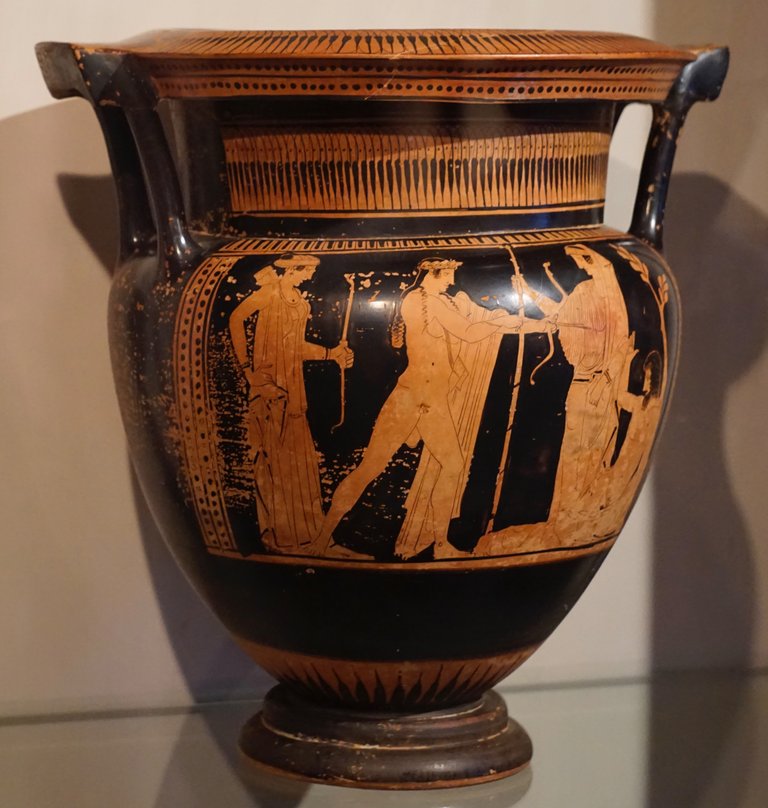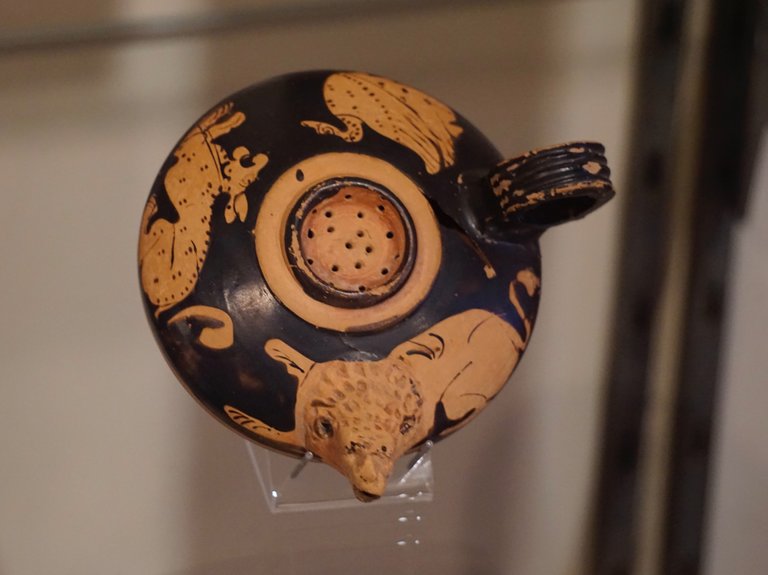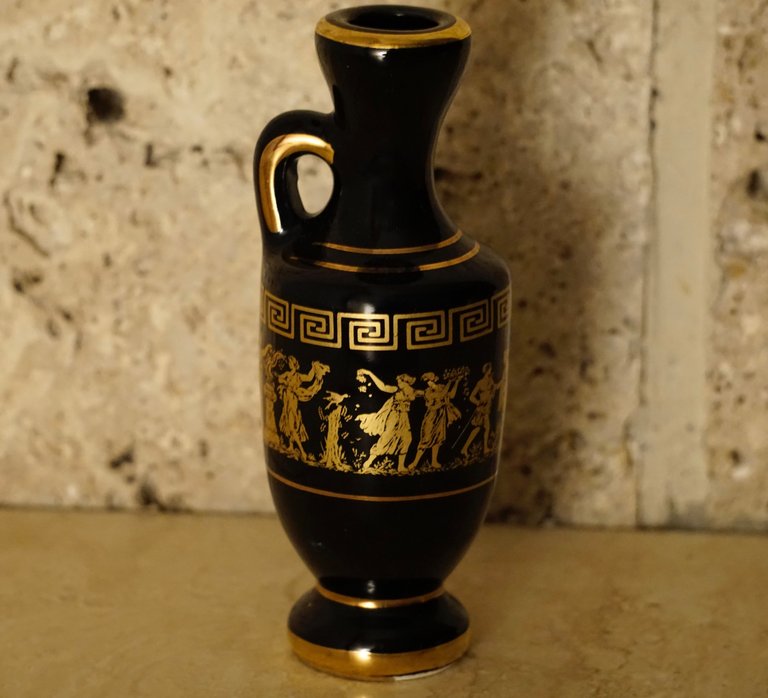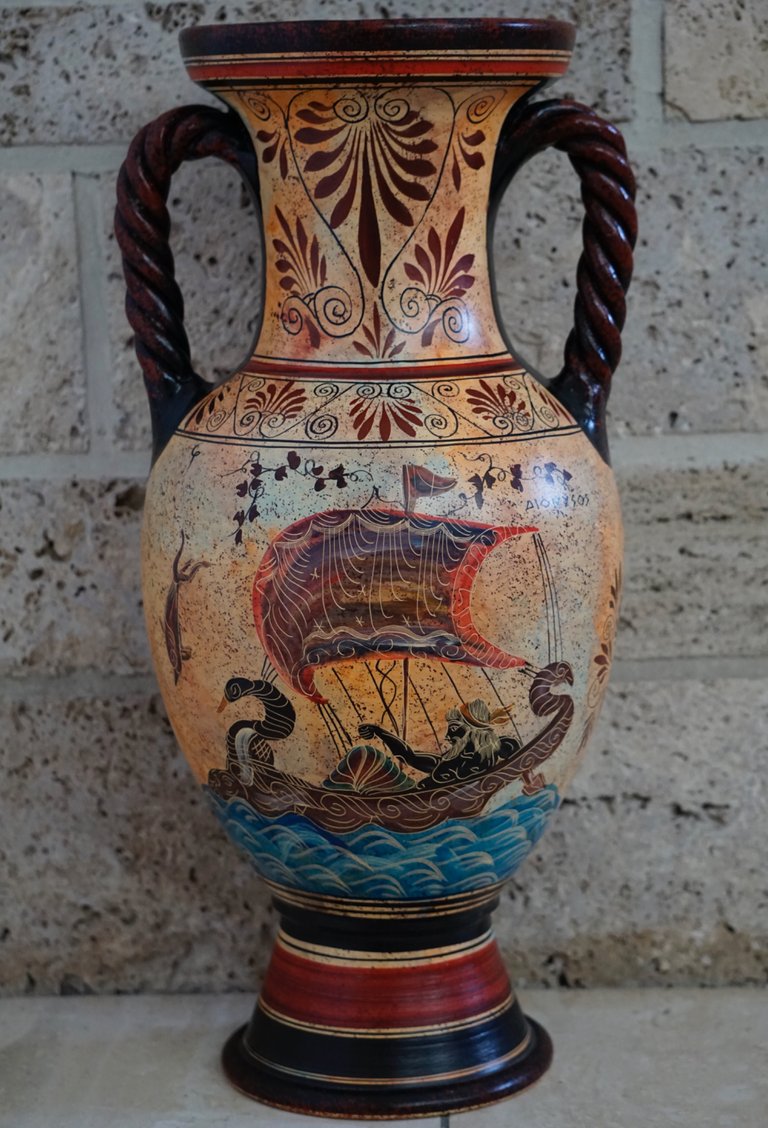Interesting facts about Greek Pottery
Hey dear community, first of all I would like to welcome you all to my new post and hope you had a day that brought some interesting experiences into your life! In this post, I would like to talk a little about ancient Greece and hope you can learn new things.
Here you can see various ceramic works of art from ancient Greece and those seen in the first two pictures are original pieces and the other reproductions from modern times. Pottery had a very high priority in ancient Greece and in almost every village there was a pottery that focused on creating objects that had a very special recognition value to this day and an important basis for production was water and clay which was common in ancient Greece. It was mainly about creating objects for daily life such as vases, plates, cups and many more and in these pictures you can see a typical krater which was intended for mixing wine with as well as an askos which was an important vessel which was mainly used for the storage of valuable liquids. In the original times, the works were not painted and only later it develop more and more into a trend to decorate the works artfully and it came to the fact that the ceramics developed more and more into a status object that was particularly popular on ritual occasions and was usually painted with historical or mythology scenes. The artists worked often based on ancient poets such as Homer, Hesiod and many more who have captured numerous legends from ancient Greece and painted ceramics were even considered a sign of prosperity and the status of a person and also represented the status of a whike society in ritual events such as festivities. At that time there were some competition fights among the different areas of Greece and everyone was of the opinion that his works are better and so it came to the fact that numerous styles have developed and of course every artist works differently and typical it was also at certain times that figures and vessels were united.
It can be said that the artists were often oriented towards different styles and in Attica, Corinth, Mycenae and other important areas had all its own recognition value and the trade of ceramics also had a huge position in ancient Greece and so it also happened that Greek art also arrived other countries and exerted influence on other cultures and there were often large differences in quality. At the beginning, it was traditionally worked with potter's wheels which was laboriously driven by other people while the potter shaped the works and in this way it also came to mass-production and often this craft was passed on within the family and after production it was usually painted by another person of the pottery than the one who produced it. After the vessels were dried and painted, they were then burned into an oven which was operated with charcoal and the flame rose upwards and was fired with high temperatures between 800 - 1000 degrees Celsius and there were some differences between the potters and in the way of working. The firing took about 10 hours and in order to keep the heat at a level, the supply of air was repeatedly regulated or wet wood was stoked to reduce the heat and over the years the production processes also became better and better and the basic form became more precise, which can be traced back to the invention of new aids and to this day, numerous old discoveries show the high importance of ceramics in ancient Greece.
Thanks for stopping by and I hope you could learn something new about greek history! I captured these pictures with my Camera Sony Alpha 6000 plus 55-210 mm lens.




https://twitter.com/lee19389/status/1783452751080403353
#hive #posh
They are very beautiful and of special design.
True, greek ceramics is something very special.